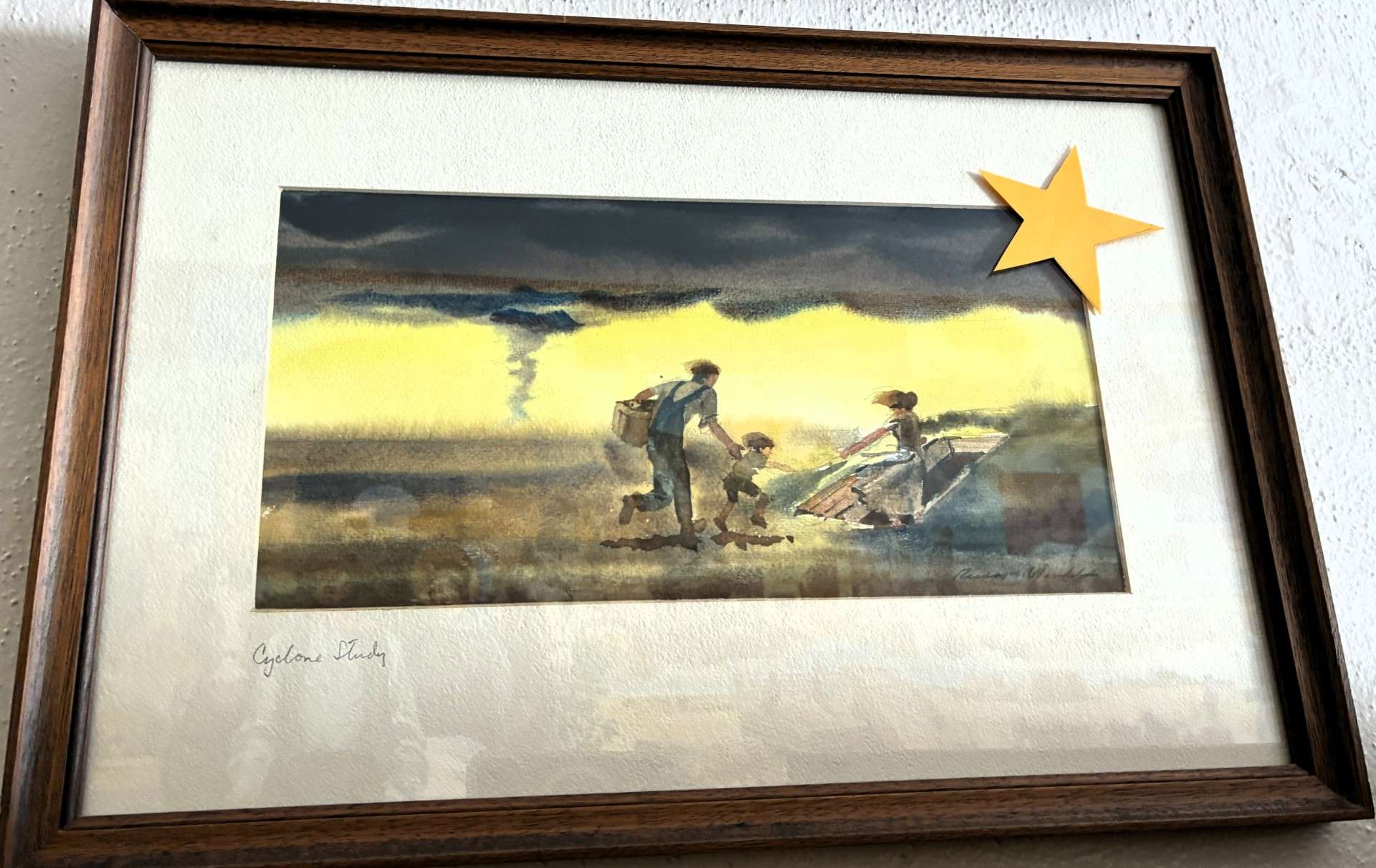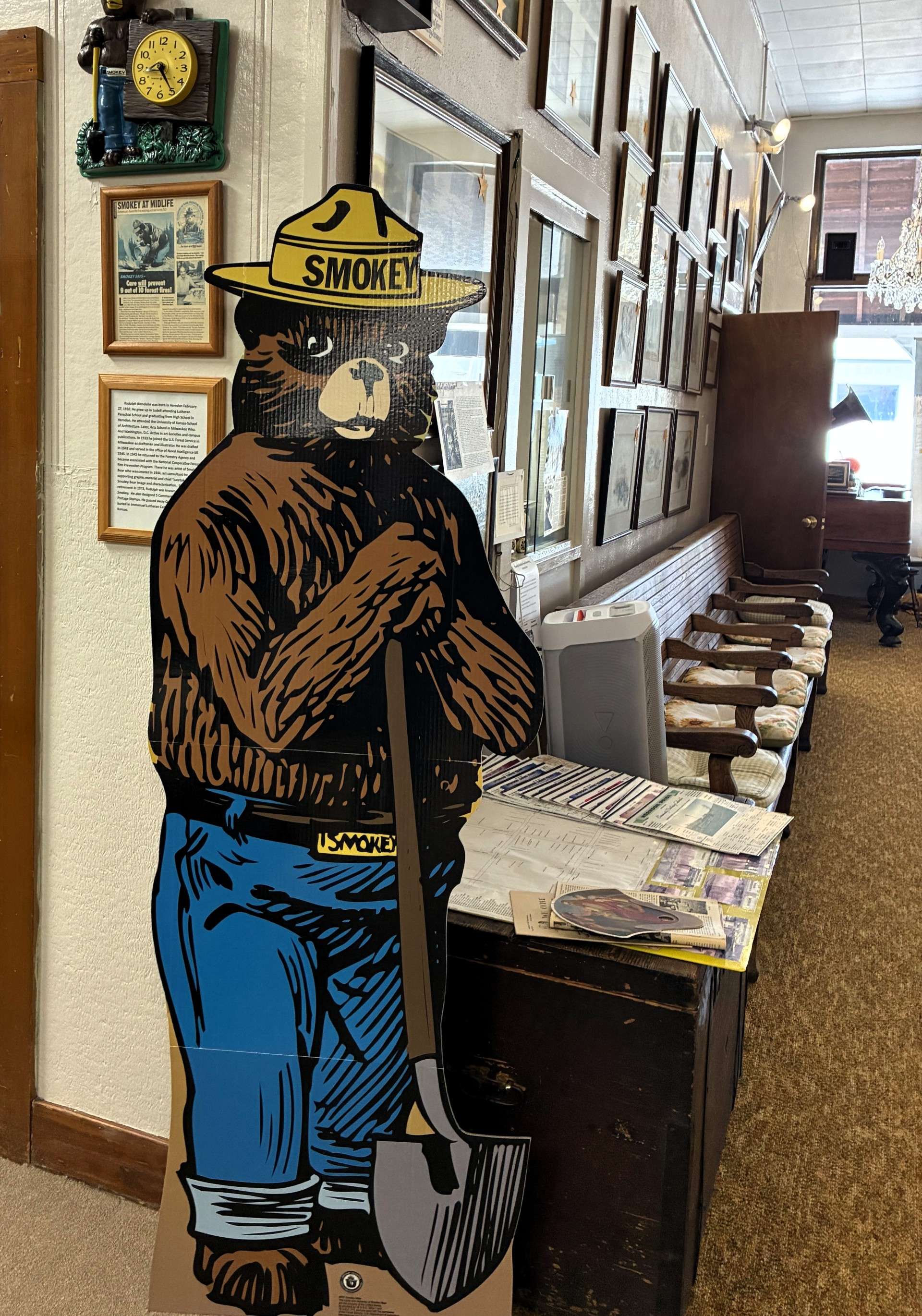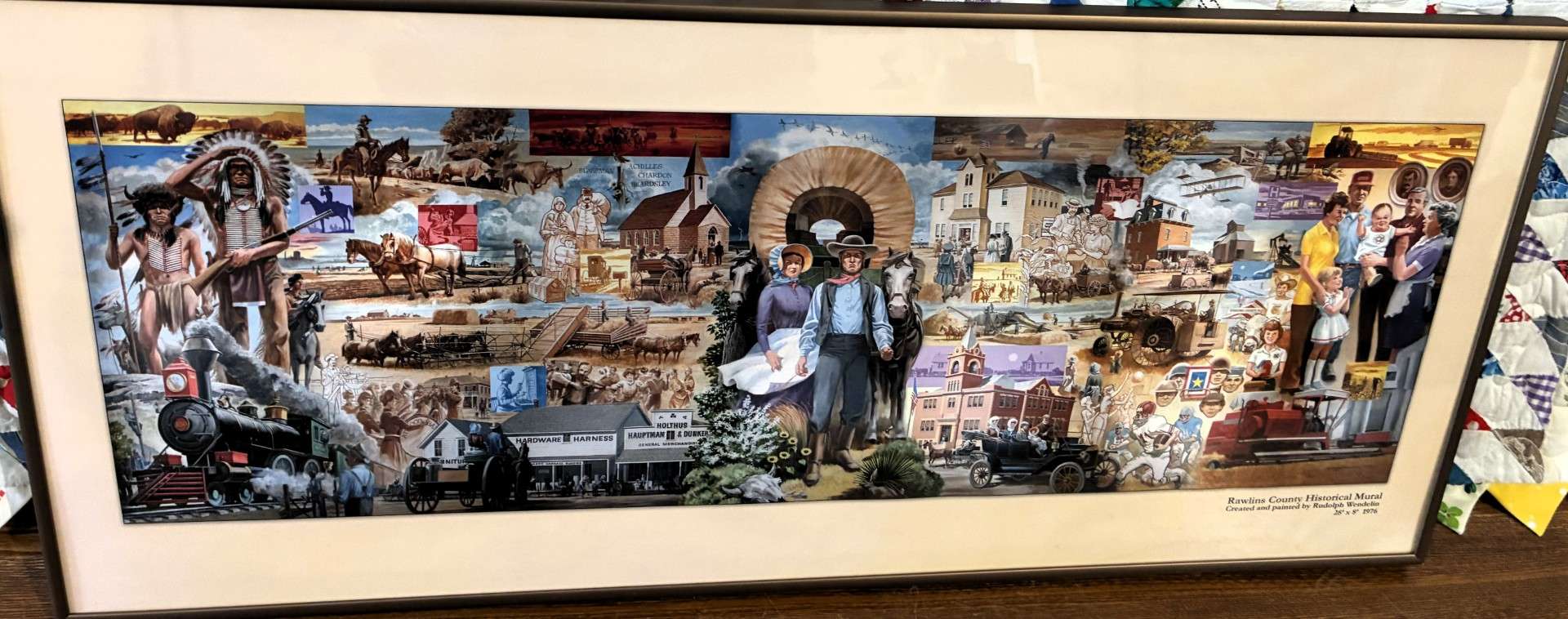
By KAREN MADORIN
As a sixth generation Kansan whose relatives settled northern Norton and Decatur Counties in 1872, pioneer stories fascinate me. Loved ones nourished spirits with tales of homesteaders and preachers along Beaver and Sappa Creeks and nearby settlements.
Rudolph Wendelin, born in Herndon—raised in Ludell, captured life along these drainages with paint and pencil. While researching Herndon, I discovered his contributions, which include Smokey Bear, his most famous United State Forest Service work.
Rudolph was born in 1910 to Paul Henry Wendelin and Mary Hauptman Wendelin in Herndon, Kansas, near where his visionary father lived and ran a gas/oil station in Ludell. Despite decades of work on the East Coast, Wendelin considered Ludell and Herndon home, leading Ludell to designate Wendelin as 1989 Ludell Days Honored Guest. This celebration grew the town’s population to 500 that day. Citizen Patriot journalist Eric Yonkey interviewed Rudolph during his visit, asking questions I wanted answered.
Yonkey explained Rudolph recognized his childhood encouraged his artistic development, writing Wendelin “was six or seven when he produced his first drawing.” Rudolph shared that he first replicated images his mother embroidered onto his school bag. He also mentioned a mentor at Ludell Elementary School who inspired him by doodling nature images in the backs of books.
While Wendelin attended Herndon High School from 1924 to 1928, he enrolled in a cartoon correspondence course, which he didn’t finish. He shared with Yonkey this was his first introduction to pencil and ink and erasing. During these years, he contributed sports cartoons and other illustrations to the Oberlin newspaper.
Following graduation, he worked at his dad’s gas station to finance architecture classes at KU. Despite Wendelin winning awards, the Great Depression made completing a degree financially impossible and he dropped out.
That led to a return to Ludell and work on the Lake Atwood Civilian Conservation Corps survey. During that time, an uncle working for the U.S. Forest Service encouraged Rudolph to send architectural and artistic drawings to the Milwaukee, WI, Forestry Service. This led to a NFS cartographer job first in Milwaukee, later in D.C., which led to poster illustrations.
WW II interrupted Wendelin’s Forest Service career with a stint in U.S. Naval Intelligence where he produced pictures of enemy uniforms and equipment. During that time, he met his future wife, also a USFS cartographer. They established a home in Arlington, VA where they raised two sons and a daughter.
Once WW II ended, Wendelin returned to USFS work.

Smokey Bear had already been created as a fire prevention promotion, and Rudolph joined the development team. His task involved humanizing the bear. Soon we saw Smokey wearing blue jeans, a campaign hat, and carrying a shovel in human-like hands. Eventually, USFS designated Wendelin as the principal caretaker of Smokey Bear’s image and inspector of Smokey Bear products until Rudolph’s retirement in 1976. In addition, he created U.S. Postal Service stamps honoring Smokey Bear, John Muir, and John Wesley Powell.

Those who wish to explore Wendelin’s work can visit Rawlins County Museum in Atwood to view a 28 x 9-foot mural representing county history he painted and donated in 1976. In addition, examine USFS Smokey Bear images and ephemera as well as Wendelin’s paintings inspired by regional residents and landscape.
This collection represents the life of a man who called this region home—to the point he and his wife’s final resting place is Ludell’s Immanuel Lutheran Cemetery.






